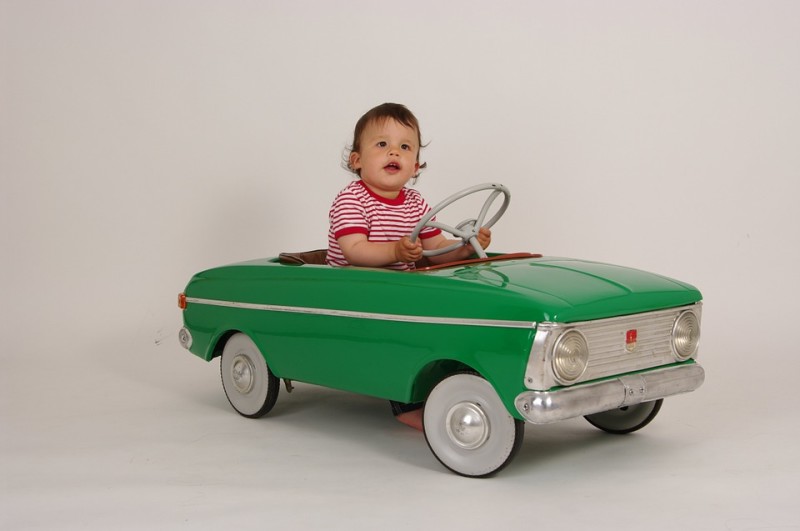Are self-driving cars the way of the future? According to their boosters, autonomous vehicles could transform urban life. No more worries about parking: your car could theoretically drive you to the city, and then head back into the burbs to pick up your kids from school and drop them home, before returning to collect you from work when needed.

But critics warn that these apparently brilliant inventions may make traffic worse than it already is. ‘If you make it easier to drive,’ points out transport activist Ivana Baiklayn, ‘more people will want to drive more often, just as people started taking more photos when digital cameras first appeared.’ Without a massive road-building programme, a flood of such vehicles could add to congestion, bringing already strained urban transport infrastructure to a standstill.

Now it appears there’s an other downside to the self-driving car revolution: experts fear that the mental and physical health impacts of self-driving cars could be even worse than the effects on traffic. New studies suggest that when people sacrifice the autonomy and freedom of being behind the wheel for being chauffeured everywhere without lifting a finger, they pay a huge price, physically and psychologically.
Dr Ivor Hart, a behavioral psychologist, explains: ‘People think autonomous cars will be 100% relaxing. After all, you just sit back and let the car do the driving. But it turns out there’s a surprisingly debilitating effect. We’ve noticed people get twitchy and anxious, they zone out, and occasionally get really angry or just start crying. They report feeling infantilised. We call it baby-in-a-car-seat syndrome.’
Fortunately, Professor Jo Ksonyu and her team at Auckland’s Institute of Autoanthropic Engineering are working on a solution. Their breakthrough approach brings together self-driving cars, social networking, and cutting-edge virtual reality equipment like the Oculus Rift.

Prof. Ksonyu explains that once cars no longer need steering wheels, accelerators, or brakes, the ‘driver’s seat’ can be transformed into an in-car fitness centre – with a 21st century twist.
‘By installing an exercise bike in these cars, and putting the passenger in virtual reality goggles, the car’s occupant not only gets a healthy workout, but can be distracted from the congealed, slow-moving river of traffic the car is forced to navigate. Their feelings of anxiety melt away.’
Here’s how it works: as the car crawls from workplace to home, the occupant can pedal briskly while enjoying a 3-D virtual experience of zipping along a well-maintained pathway at speeds much faster than the bumper-to-bumper traffic.
Those who have experienced the prototype VR-PedalCar, as the new invention is being called, report a powerfully realistic sensation of actual movement and freedom. Not only does the view change continuously, but flowers and trees are rendered with photorealistic precision. Special fans mounted in the car’s dashboard blow cool, fresh air into the user’s face, so they are at no risk from overheating. A ‘rainy day’ option can be programmed to spritz the user with a light mist of water.

For fans of fitness data, constant biofeedback lets you know your own arteries are in tip-top working order – in contrast to the roads, which resemble the inner plumbing of a heart attack victim. And whereas a human life can be saved with a bypass, the same surgery on a city would involve buying vast tracts of privately owned land and spending billions of taxpayer dollars to subsidise car users, an increasingly politically poisonous combination.
Dr Mick Smidsy, one of the engineers on the project, acknowledges the built-in paradox: ‘The longer you spend in a VR-PedalCar, the more time you can spend getting fit – which suggests that traffic congestion might actually come to be socially desirable in terms of broader public health outcomes. More people stuck in VR-PedalCars for longer means a healthier population overall. Go figure!’
To help address the extra mental stress of ever-longer commutes, the team has been working on a ‘social intelligence’ tweak suggested by psychologists: interfacing the car’s GPS via the VR goggles to profiles on dating sites like Tinder, Grindr, Findr or Mindr. This means a VR-PedalCar ‘driver’ can actually ‘chat’ in real time to other VR-PedalCar ‘drivers’ as they travel together through a refreshing virtual world superimposed on the terminally clogged motorways.
And, to enhance the experience (and based on early user criticism of generic computer generated scenery), the Autoanthropic Institute is now testing a range of upgraded simulations that use street views from real cities.
‘It makes sense,’ says Dr Smidsy. ‘People love feeling like they’re in a real city, not just trapped on a motorway. So our ‘Amsterdam’ simulation features helmetless Dutch hotties – can I say that? – who weave expertly around you. It’s pretty neat. And the ‘London’ version lets you enjoy rolling along cycle superhighways past historic buildings while being honked at by cheery Cockney cabbies.’

Next on the list? The ‘Auckland’ module, an interval-training delight that alternates between dedicated bike lanes – some of them bright pink! – and regular city streets, with a variety of exciting weather experiences along the way. At the end of the trip, you can download a simulated ‘helmet-cam’ video of the journey to show to your family or upload to YouTube.
It appears the future of transport is limited only by our imaginations – in more ways than one. Asked if he thought that some commuters might opt to abandon VR-PedalCars for the cheaper (and probably faster) option of an actual bicycle, Dr Smidsy seemed flummoxed.
‘I honestly don’t know,’ he said. ‘I mean, human beings have been driving to work in cars since the dawn of time. How on earth would you persuade them that riding a bike could be better in any way, let alone in every way? People just aren’t that easily fooled.’



